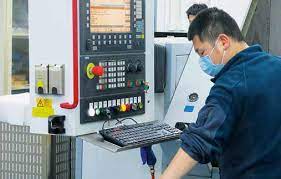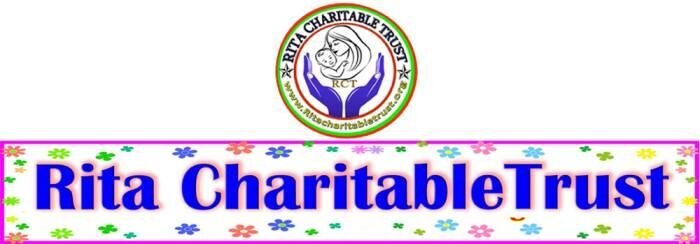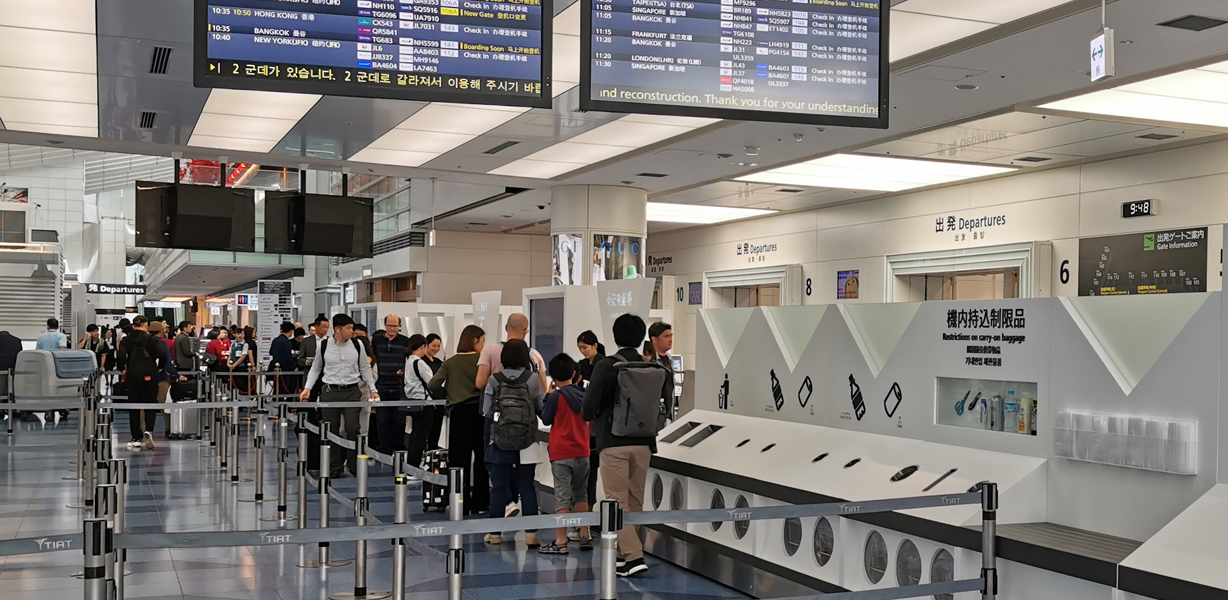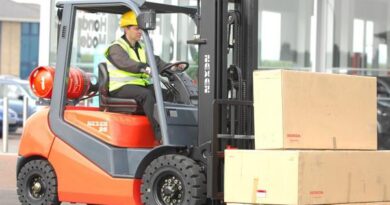Free FOL Storage and Control Technician Course (6months)
FOL Storage and Control Technician:
Brief Job Description: Fuel Oil Lubricant (FOL) storage and control technician is responsible for proper storage, records and issues of Fuel Oil and Lubricants for maintenance services.
Personal Attributes: key attributes for FOL Storage and Control Technician would include good communication skills, excellent written communication skills and good interpersonal skills with a keen eye for details.


Safety and security procedures:
Comprehending the safety and security procedures

PC1. comprehend the organisation’s safety and security policies and procedures
PC2. comprehend the regulatory guidelines on safe conduct of operations and maintenance of conditions to thwart any acts of unlawful interference
PC3. report any identified breaches of safety, and security policies and procedures to the designated person
PC4. coordinate with other resources at the workplace (within and outside the organisation) to achieve safe and secure environment
PC5. identify and mitigate any safety and security hazards like illness, accidents, fires or acts of unlawful interference if it falls within the limits of individual’s authority
PC6. report any hazards outside the individual’s authority to the relevant person in line with organisational procedures and regulatory guidelines
PC7. follow organisation’s emergency procedures for accidents, fires or acts of unlawful interference
PC8. identify and recommend opportunities for improving health, safety, and security to the designated person
PC9. ensure all health and safety records are updated and procedures are well defined
Knowledge and Understanding

Organisational
Context
KA1. hazard identification and risk management as defined within the organisational policy and procedures.
KA2. regulatory requirements and organisation’s procedures for maintenance of safety and security standards and individual’s role and responsibilities in relation to this
KA3. how and when to report hazards
KA4. the limits of responsibility for dealing with hazards
KA5. the organisation’s emergency procedures for different emergency situations and the importance of following these
KA6. importance of maintaining high standards of safety and security
KA7. implications that any non-compliance with safety and security may have on individuals and the organisation
Technical
Knowledge
KB1. different types of breaches of safety and security and how and when to report these
KB2. evacuation procedures for workers and passengers
KB3. how to summon medical assistance and the emergency services, where necessary
KB4. how to use the health, safety and accident reporting procedures and the importance of these
KB5. regulatory guidelines on dealing with safety and security emergencies
Core Skills/ Generic Skills

| Writing Skills |
| The user/ individual on the job needs to know and understand how to: SA1. complete accurately well written report in English language detailing the situations of emergency with attention to detail |
| Reading Skills |
| The user/individual on the job needs to know and understand how to: SA2. read instructions/guidelines/procedures/rules |
| Oral Communication (Listening and Speaking skills) |
| The user/individual on the job needs to know and understand how to: SA3. listen to and orally communicate information with all concerned |
Professional Skills
| Decision Making |
| The user/individual on the job needs to know and understand how to: SB1. make decisions on a suitable course of action or response if permitted by the authority matrix |
| Plan and Organize |
| The user/individual on the job needs to know and understand: SB2. monitor efficient functioning of all activities SB3. plan and organise work to achieve targets and deadlines. Customer Centricity The user/individual on the job needs to know and understand how to: SB4. communicate with customers and other stakeholders in a courteous manner SB5. maintain cordial work relationship Problem Solving The user/individual on the job needs to know and understand how to: SB6. identify trends/common causes for errors and suggest possible solutions to the supervisor / management SB7. identify and correct errors Analytical Thinking The user/individual on the job needs to know and understand how to: SB8. analyse best possible solutions (cost, time, effort, etc.) suited for operations Critical Thinking The user/individual on the job needs to know and understand how to: SB9. concentrate on task at hand and complete it without errors SB10. apply balanced judgments to different situations FOL storage and control methods Performance Criteria Raise a request for stock replenishment PC1. check and confirm the inventory of Fuel, oil and lubricants at base and line stations PC2. confirm with the engineering team the requirements at the base and line stations for fuel,oil and lubricants PC3. identify the gap in the requirements ad inventory and raise the necessary purchase requistion as per organisation policy and procedures Receive incoming stock and issue of stock from warehouse PC4. receive the stock of incoming fuel, oil and lubricants from the vendor PC5. confirm the batch number, expiry date and othe relevant details of the shipment as required by organisation policy and procedures PC6. store the fuel, oil and lubricants stock in the respective areas in line with the storage instructions and guidelines as per relevant manuals of the organisation PC7. update the relevant register/computer systems with the information on the quantity received along with other required information such as batch number and expiry date as required by the organisation policy and procedures PC8. issue the required quantity of fuel,oil and lubricant to the required stations as per First In First Out (FIFO) method PC9. update the systems regularly regarding the issued quantity of fuel,oil and lubricants  Monitor the stock in storage PC10. monitor the stock of fuel, oil and lubricants to check for any visual damage to the storing containers or leakages PC11. monitor the shelf life remaining of the fuel, oil and lubricants in stock PC12. ensure that the stock is disposed off in the manner as per the procedures in the organisation manual incase of shelf life expiry PC13. update the system with the disposed off stock Knowledge and Understanding Knowledge and Understanding KA1. hazard identification and risk management as defined within the organizational policy and procedures KA2. regulatory requirements and organization’s procedures for maintenance of safety and security standards and individual’s role and responsibilities in relation to this KA3. how and when to report hazards KA4. the limits of responsibility for dealing with hazards KA5. the organization’s emergency procedures for different emergency situations and the importance of following these KA6. the importance of maintaining high standards of safety and security KA7. implications that any non-compliance with safety and security may have on individuals and the organisation Technical Knowledge KB1. different types of contamination of fuel, oil and lubricants KB2. storage do’s and don’t’s for fuel,oil and lubricants KB3. handling of dangerous goods KB4. how to use the health, safety and accident reporting procedures and the importance of these KB5. regulatory guidelines on dealing with safety and security emergencies Core Skills/ Generic Skills Writing Skills The user/ individual on the job needs to know and understand how to: SA1. complete accurately well written report in English language detailing the situations of emergency with attention to detail Reading Skills The user/individual on the job needs to know and understand how to: SA2. read instructions/guidelines/procedures/rules Oral Communication (Listening and Speaking skills) The user/individual on the job needs to know and understand how to: SA3. listen to and orally communicate information with all concerned Professional Skills Decision Making The user/individual on the job needs to know and understand how to: SB1. make decisions on a suitable course of action or response if permitted by the authority matrix Plan and Organize The user/individual on the job needs to know and understand how to: SB2. monitor efficient functioning of all activities SB3. plan and organise work to achieve targets and deadlines Customer Centricity The user/individual on the job needs to know and understand how to: SB4. communicate with stakeholders in a courteous manner SB5. maintain cordial work relationship Problem Solving The user/individual on the job needs to know and understand how to: SB6. identify trends/common causes for errors and suggest possible solutions to the supervisor / management SB7. ability to identify and correct errors Analytical Skills The user/individual on the job needs to know and understand how to: SB8. analyse best possible solutions (cost, time, effort, etc) suited for operations Critical Thinking Skills The user/individual on the job needs to know and understand how to: SB9. ability to concentrate on task at hand and complete it without errors SB10. apply balanced judgments to different situations  Maintain 5S at the work premises Performance Criteria Ensure sorting PC1. follow the sorting process and check that the tools, fixtures & jigs that are lying on workstations are the ones in use and un- necessary items are not cluttering the workbenches or work surfaces. PC2. ensure segregation of waste in hazardous/ non Hazardous waste as per the sorting work instructions PC3. follow the technique of waste disposal and waste storage in the proper bins as per SOP PC4. segregate the items which are labeled as red tag items for the process area and keep them in the correct places PC5. sort the tools/ equipment/ fasteners/ spare parts as per specifications/ utility into proper trays, cabinets, lockers as mentioned in the 5S guidelines/ work instructions PC6. ensure that areas of material storage areas are not overflowing PC7. pr operly stack the various types of boxes a nd containers as per the size/ utility to avoid any fall of items/ breakage and also enable easy sorting when required PC8. return the extra material and tools to the designated sections and make sure that no additional material/ tool is lying near the work area PC9. follow the floor markings/ area markings used for demarcating the various sections in the plant as per the prescribed instructions and standards Ensure proper documentation and storage PC10. follow the proper labeling mechanism of instruments/ boxes/ containers and maintaining reference files/ documents with the codes and the lists PC11. check that the items in the respective areas have been identified as broken or damaged PC12. follow the given instructions and check for labeling of fluids, oils. Lubricants, solvents, chemicals etc. and proper storage of the same to avoid spillage, leakage, fire etc. PC13. make sure that all material and tools are stored in the designated places and in the manner indicated in the 5S instructions Ensure cleaning of self and the work place PC14. check whether safety glasses are clean and in good condition PC15. keep all outside surfaces of recycling containers are clean PC16. ensure that the area has floors swept, machinery clean and generally clean. In case of cleaning, ensure that proper displays are maintained on the floor which indicate potential safety hazards PC17. check whether all hoses, cabling & wires are clean, in good condition and clamped to avoid any mishap or mix up PC18. ensure workbenches and work surfaces are clean and in good condition PC19. follow the cleaning schedule for the lighting system to ensure proper illumination PC20. store the cleaning material and equipment in the correct location and in good condition PC21. ensure self-cleanliness – clean uniform, clean shoes, clean gloves, clean helmets, personal hygiene Ensure sustenance PC22. follow the daily cleaning standards and schedules to create a clean working environment PC23. attend all training programs for employees on 5S PC24. support the team during the audit of 5S PC25. participate actively in employee work groups on 5S and encourage team members for active participation PC26. follow the guidelines for What to do and What not to do to build sustainability in 5S as mentioned in the 5S check lists/ work instructions Knowledge and Understanding Organizational Context KA1. relevant standards, procedures and policies related to 5S followed in the company Technical Knowledge KB1. have basic knowledge of 5S procedures KB2. know various types 5S practices followed in various areas KB3. understand the 5S checklists provided in the department/ team KB4. have skills to identify useful & non useful items KB5. have knowledge of labels , signs & colours used as indicators KB6. have knowledge on how to sort and store various types of tools, equipment, material etc. KB7. how to identify various types of waste products KB8. understand the impact of waste/ dirt/ dust/unwanted KB9. substances on the process/ environment/ machinery/ human body KB10. have knowledge of best ways of cleaning & waste disposal KB11. understand the importance of standardization in processes KB12. understand the importance of sustainability in 5S KB13. have knowledge of TQM process KB14. have knowledge of various materials and storage norms KB15. understand visual controls, symbols, graphs etc. Core Skills/ Generic Skills Writing Skills The user/ individual on the job needs to know and understand how to: SA1. write basic level notes and observations SA2. note down observations (if any) related to the process SA3. write information documents to internal departments/ internal teams Reading Skills The user/individual on the job needs to know and understand how to: SA4. read 5S instructions put up across the plant premises Oral Communication (Listening and Speaking skills) The user/individual on the job needs to know and understand how to: SA5. effectively communicate information to team members inform employees in the plant and concerned functions about 5S SA6. question the process head in order to understand the 5S related issues SA7. attentively listen with full attention and comprehend the information given by the speaker during 5S training programs Professional Skills Thinking The user/individual on the job needs to know and understand how to: SB1. use common sense and make judgments during day to day basis SB2. use reasoning skills to identify and resolve basic problems using 5S Persuasion The user/individual on the job needs to know and understand: SB3. persuade co-team members to follow 5S SB4. ensure that the co team members understand the importance of using 5S tool Creativity The user/individual on the job needs to know and understand: SB5. use innovative skills to perform and manage 5S activities at the work desk and the shop floor SB6. exhibit inquisitive behavior to seek feedback and question on the existing set patterns of work Self-Discipline The user/individual on the job needs to know and understand how to: SB7. do what is right, not what is a popular practices SB8. follow shop floor rules& regulations and avoid deviations; make 5S an integral way of life SB9. ensure self-cleanliness on a daily basis SB10. demonstrate the will to keep the work area in a clean and orderly manner  Model Curriculum FOL Storage and Control Technician Follow safety and security procedures · comprehend the organisation’s safety and security policies and procedures comprehend the regulatory guidelines on safe conduct of operations and maintenance of conditions to thwart any acts of unlawful interference report any identified breaches of safety, and security policies and procedures to the designated person coordinate with other resources at the workplace (within and outside the organization) to achieve safe and secure environment identify and mitigate any safety and security hazards like illness, accidents, fires or acts of unlawful interference if it falls within the limits of individual’s authority report any hazards outside the individual’s authority to the relevant person in line with organisational procedures and regulatory guidelines follow organisation’s emergency procedures for accidents, fires or acts of unlawful interference identify and recommend opportunities for improving health, safety, and security to the designated person complete all health and safety records are updates and procedures well defined FOL storage and control methods · check and confirm the inventory of Fuel, oil and lubricants at base and line stations confirm with the engineering team the requirements at the base and line stations for fuel, oil and lubricants identify the gap in the requ irements and inventory and raise the necessary purchase requisition as per organisation policy and procedures To be competent, the user/individual on the job must be able to: receive the stock of incoming fuel, oil and lubricants from the vendor confirm the batch number, expiry date and other relevant details of the shipment as required by organisation policy and procedures store the fuel, oil and lubricants stock in the respective areas in line with the storage instructions and guidelines as per relevant manuals of the organisation update the relevant register/computer systems with the information on the quantity received along with other required information such as batch number and expiry date as required by the organisation policy and procedures issue the required quantity of fuel, oil and lubricant to the required stations as per First In First Out (FIFO) method update the systems regularly regarding the issued quantity of fuel, oil and lubricants To be competent, the user/individual on the job must be able to: periodically monitor the stock of fuel, oil and lubricants to check for any visual damage to the storing containers or leakages monitor periodically the shelf life remaining of the fuel, oil and lubricants in stock ensure that the stock is disposed off in the manner as per the procedures in the organisation manual in case of shelf life expiry update the system with the disposed off stock Maintain 5S at the work premises · follow the sorting process and check that the tools, fixtures & jigs that are lying on workstations are the ones in use and un- necessary items are not cluttering the workbenches or work surfaces. ensure segregation of waste in hazardous/ non Hazardous waste as per the sorting work instructions follow the technique of waste disposal and waste storage in the proper bins as per SOP segregate the items which are labeled as red tag items for the process area and keep them in the correct places sort the tools/ equipment/ fasteners/ spare parts as per specifications/ utility into proper trays, cabinets, lockers as mentioned in the 5S guidelines/ work instructions ensure that areas of material storage areas are not overflowing properly stack the various types of boxes and containers as per the size/ utility to avoid any fall of items/ breakage and also enable easy sorting when required return the extra material and tools to the designated sections and make sure that no additional material/ tool is lying near the work area follow the floor markings/ area markings used for demarcating the various sections in the plant as per the prescribed instructions and standards follow the proper labeling mechanism of instruments/ boxes/ containers and maintaining reference files/ documents with the codes and the lists check that the items in the respective areas have been identified as broken or damaged follow the given instructions and check for labeling of fluids, oils, lubricants, solvents, chemicals etc. and proper storage of the same to avoid spillage, leakage, fire etc. make sure that all material and tools are stored in the designated places and in the manner indicated in the 5S instructions check whether safety glasses are clean and in good condition keep all outside surfaces of recycling containers are clean ensure that the area has floors swept, machinery clean and generally clean. ensure that proper displays are maintained on the floor which indicate potential safety hazards ch eck whether all hoses, cabling & wires are clean, in good condition and clamped to avoid any mishap or mix up ensure workbenches and work surfaces are clean and in good condition follow the cleaning schedule for the lighting system to ensure proper illumination store the cleaning material and equipment in the correct location and in good condition ensure self-cleanliness – clean uniform, clean shoes, clean gloves, clean helmets, personal hygiene follow the daily cleaning standards and schedules to create a clean working environment attend all training programs for employees on 5S support the team during the audit of 5 S participate actively in employee work groups on 5S and encourage team members for active participation follow the guidelines for What to do and What not to do to build sustainability in 5S as mentioned in the 5S check lists/ work instructions Unique equipment used; Video/2D or 3D software based audio-visual training package Common & special gauges and testers Common & special tools ATF bowser personal protective equipment (PPE) (consisting of safety jacket, safety goggles, ear plugs, gloves, safety shoes & safety helmet) fuel/oil fire fighting equipment Guidelines for Assessment 1. Criteria for assessment for each Qualification Pack will be created by the Sector Skill Council. Each Performance Criteria (PC) will be assigned marks proportional to its importance in NOS. SSC will also lay down proportion of marks for Theory and Skills Practical for each PC 2. The assessment for the theory part will be based on knowledge bank of questions created by the SSC 3. Individual assessment agencies will create unique question papers for theory part for each candidate at each examination/training center (as per assessment criteria below) 4. Individual assessment agencies will create unique evaluations for skill practical for every student at each examination/training center based on this criteria 5. To pass the Qualification Pack, every trainee should score a minimum of 70% in aggregate 6. The marks are allocated PC wise, however, every NOS will carry a weightage in the total marks allocated to the specific QP |








